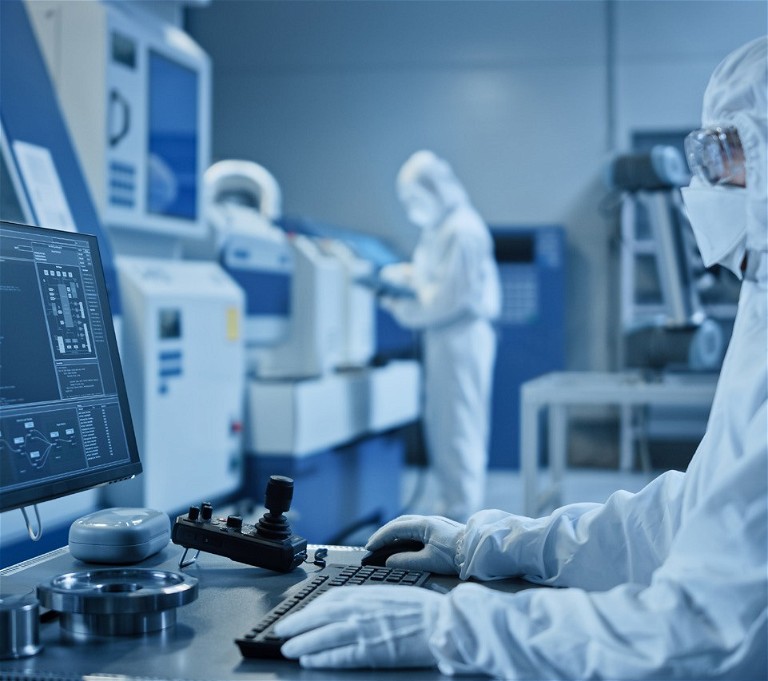Lab Automation: Plug & Play Labs
The Importance of Network Integration for Measurement and Hygiene Technology Solutions
Healthcare and scientific facilities are critical for the health of the global population. During the COVID-19 pandemic, scientific facilities helped to deliver life-saving vaccines, re-emphasising their importance in achieving other scientific milestones in the coming decades
By Alan Hayward at SEH Technology
Technology is a powerful enabler for scientists and healthcare professionals, helping them to operate and to scale up in ways not previously possible. Networking technologies have been and continue to be one of the primary enablers for transformation in the healthcare and scientific sectors. This piece will explore why network integration is important in the area of measurement and hygiene technology solutions, and how the key challenges can be addressed.
The Key Issues Facing Laboratories Today
Laboratories often face hurdles related to funding, management and communication. A lack of funding constrains the operations of many laboratories, sometimes having to do more with less and often lacking the equipment necessary to carry out high-quality research, putting additional pressure on operations. Public laboratory operators, such as universities and public healthcare/scientific institutions, particularly face these constraints due to budget pressures and a need to drive down costs.
Furthermore, challenges related to management lacking the software necessary to connect and understand their key systems can arise, and managers also face challenges in ensuring that laboratory systems comply with both external and internal protocols and regulations – a key challenge in the highly regulated scientific sectors. For some medical laboratories, documenting the cleaning and sterilisation process is a legal requirement, meaning certified hardware and software are a necessity.
Laboratories also need watertight documentation procedures in place to be able to trace and record disinfection and sterilisation processes to ensure compliance and protect against liability risks. The long-term preservation of records can be ensured by PDF formats that are electronically signed and as such are legally valid, allowing for maximum data security and compliance. Increasingly, technological solutions are being seen as the way forward to help laboratory staff streamline their operations in an age of scientific and technological disruption.
Workflow Optimisation
The evolution of IT infrastructures has enabled healthcare and scientific organisations to leverage vast amounts of data more quickly, as well as transition their data and delivery to optimise workflows. From managing simple tasks to extremely complex processes, optimising these workflows can help reduce waste and improve resource utilisation to ensure laboratories run more efficiently. This will also have a direct impact on both the quality and quantity of work, boosting outcomes and the overall experience.
Many healthcare and scientific organisations are prioritising the modernisation of traditional workloads. To do this, they should first look to simplify everyday tasks and identify any inefficiencies, bottlenecks or redundant work. Scientific workflows are known for being notoriously complex and involving multiple steps; sequencing, for example, has quite a long series of steps and specific equipment needed to complete the process.

Laboratories deal with significant amounts of samples and related workflows including sample receipt, shipping, handling and preparation. Collaboration and accountability can be improved by assigning tasks and sample processing can be more easily managed by having a laboratory-wide view. Technology has a big part to play in this as it enhances operational efficiencies by managing virtual environments and redefining workflows with minimal disruption for staff.
Software designed specifically for laboratory workflow management can help optimisation by allowing for the easy monitoring of all the sample processing activities occurring in a laboratory at any time, and standardisation of processes or procedures using templates. Intelligent monitoring, for example, can monitor in the background to eliminate the possibility of operator errors, along with the consequences that can arise from them. Levels of safety can be increased with software to monitor routine tests and batch controls such as batch-based testing, scheduled checks and time-critical inspections. The priority of scientists is scientific research, as opposed to spending time on laborious and routine tasks that can be optimised with the right technological solutions.
Connecting Local USB Devices
Laboratories are host to a whole multitude of scientific devices such as extraction equipment, thermal cyclers, centrifuges and sequencers. Connecting all of these devices is no easy feat. Devices such as sterilisers, thermal disinfectors and incubators are based on different hardware and underpinning software platforms. Laboratories can enlist the help of external technical consultants to decide on the best methods for allowing information flows between varying connections, ports and interfaces to move uniformly in a laboratory network, catalysing their digital transformation efforts in a complex sector.
Medical and laboratory devices sometimes only have a USB interface for connecting to a practice or laboratory network. Until recently, the conventional solution was to have a desktop PC set up next to the laboratory device, but this had drawbacks from a practical, as well as an operating system, perspective. What’s needed are flexible solutions based on the ‘plug & play’ principle, which ensures ease-of-use for specific laboratory and healthcare use case scenarios. With just one click, a virtual USB connection can be established with devices, as if they were connected locally. Busy and fast-growing laboratories can benefit from plug & play capabilities as they look to scale and operate more efficiently.
Easy Handling and Intuitive Integration
Medical staff have other areas of responsibilities and competencies than just integrating sterilisers or incubators into a network, but having the wrong technology solutions in place can divert their attention away from their most important tasks. Technology providers can prevent such issues from taking place by remotely assisting with technical support and the optimisation of networking solutions. Laboratories require reliable and robust solutions to withstand the demands of laboratory activities, enabling scientists to focus on their work without the added stress of unreliable technology solutions.
Choosing the right technology provider comes down to numerous factors including cost, performance and staff with high levels of experience. Technology integration can be an intuitive and hassle-free process when the right expertise is leveraged. This then leads to a strong return on investment that can be measured not only in terms of cost but also in customer and user satisfaction. Overcoming the challenges of network integration is a key enabler of digital transformation in laboratories and medical institutions today and it’s well worth the effort involved to leverage the benefits.

Alan Hayward is sales and marketing manager at SEH Technology UK and has been with the company for 21 years. In this role, Alan’s responsibilities include overseeing all sales and marketing activity in the UK, as well as collaborating with clients including resellers and distributors.